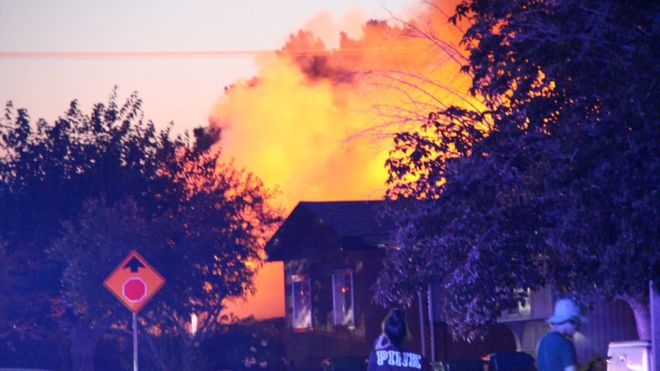
A 7.1 magnitude earthquake has rattled a desert area of Southern California, US meteorologists say, in the biggest tremor to strike in two decades.
It struck at the shallow depth of 0.9km (0.6 miles) and its epicentre was near the city of Ridgecrest, about 240km north-east of Los Angeles.
A 6.4 magnitude quake hit the same region on Thursday at a depth of nearly 11km.
Seismologist Dr Lucy Jones said the quakes could continue.
“This is an earthquake sequence,” she said at a press conference. “It will be ongoing.”
“Every earthquake makes another earthquake more likely,” she added, saying there was a 10% chance of a similar or even larger quake following in the next week.
However, Dr Jones said it was not likely the quake would trigger shocks on other fault lines.
Reports suggest it could be felt as far away as Las Vegas in the neighbouring state of Nevada.
What’s the damage?
Fires have broken out and emergency services are responding to calls across the state after the quake.
“We’ve got fires, we’ve got gas leaks, we’ve got injuries, we’ve got people without power,” Ridgecrest Mayor Peggy Breeden told Reuters news agency. “We’re dealing with it as best we can.”
The San Bernardino County Fire Department said reports suggested “damage is more significant than yesterday’s quake”, and said they were tackling blazes and gas leaks.
Officials said it was still unclear how much damage had been caused and how many people had been injured in the state.
“It was bad. Man. It hasn’t stopped yet,” local resident Jeremiah Jones told the Los Angeles Times.
Thursday’s event wrecked some homes in the region.
The Los Angeles Fire Department however said nobody had been killed or injured. A statement after the latest quake said the authorities had seen “no major infrastructure damage” after a survey of the city.
Crowds at a Los Angeles Dodgers baseball game were seen leaving their seats when the quake struck, although the players themselves continued playing.
What do we know about the new quake?
It hit at 20:19 local time on Friday (04:19 BST Saturday), the US Geological Survey (USGS) said.
After Thursday’s event, seismologists had been warning that aftershocks could continue for a prolonged period of time.
Ridgecrest resident Jessica Kormelink told AFP news agency the ground would stop shaking briefly before “rolling again”.
“I’m not comfortable inside,” she said.
California is prone to earthquakes as it lies on a number of faults – regions where tectonic plates come together.
Dr Jones told the Los Angeles Times this fault could be up to 30 miles long.
“The fault is growing,” she said. “We ruptured a piece in the first earthquake… and we’ve ruptured more now.”
The San Andreas Fault is the largest, extending about 1,200km through the state.
But Dr Jones said this quake was in a distant fault system, and was unlikely to trigger a quake along the San Andreas Fault.
Source: BBC

